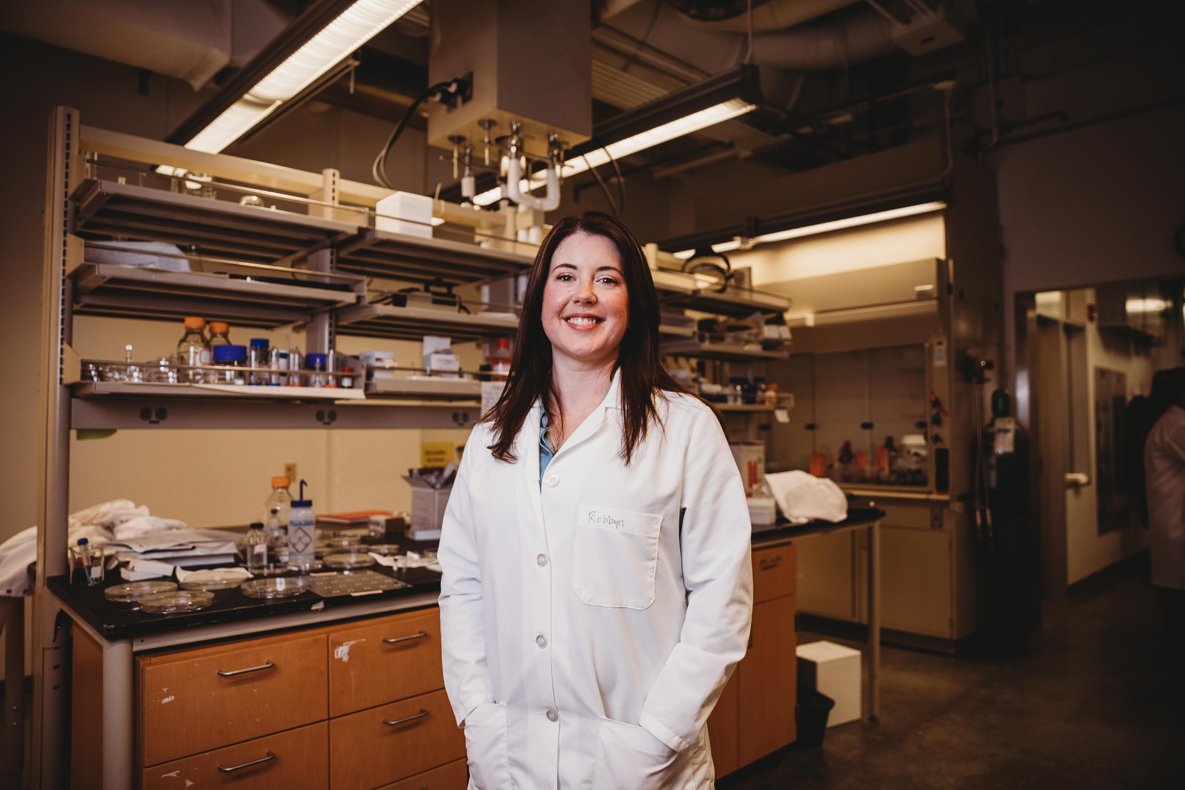Robbyn Anand was 7 years old and sifting through a deck of vocabulary cards when the word “ameliorate” caught her eye. The card also featured a colorful illustration of a doctor gently bandaging a patient’s arm.
Anand was instantly intrigued as she pondered the unfamiliar word.
“I remember being drawn to the idea that there was one word for improving a situation when someone is hurt or needs care,” said Anand, assistant professor of chemistry and the Suresh Faculty Fellow. “I liked that you could fix things and make life better for people and I knew that’s what I wanted to do.”
Anand’s career as an analytical chemist has been wholly defined by her desire to make life better—and ultimately healthier—for people. Her research sits at the intersection of electrochemistry and separation science, a narrow niche of analytical chemistry.
The results of her research are groundbreaking.
Anand has developed several diagnostic devices and processes that tackle some of the most challenging public-health issues, including COVID-19, cancer and kidney disease. Although these diseases impact global populations, what motivates Anand is a sincere desire to help people in her own backyard—family members, friends and the dedicated students in her lab.
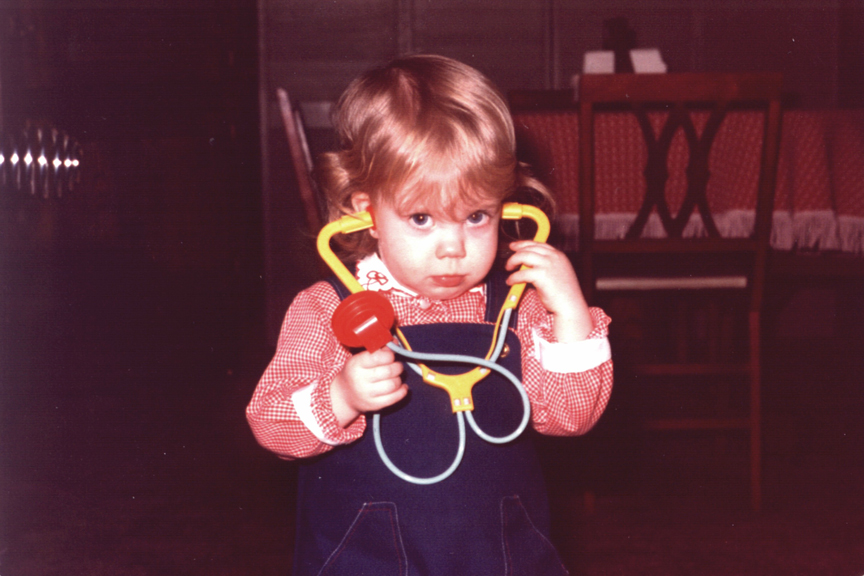
Her closest connections have inspired her most successful and highest-profile research projects.
“The common theme in my research is making diagnostics accessible for people in order to improve their lives,” Anand said. “And this is definitely the driving force behind the COVID-19 research we’re doing now.”
The Anand Lab goes viral
As Iowa State students began the fall semester, COVID-19 cases increased. Many of Anand’s undergraduate and graduate students were forced to quarantine, resulting in delayed day-to-day operations in her lab and extended research deadlines.
“After being exposed to COVID-19, many of my students had to wait a while to get test results. They also had to remain at home and quarantine for two weeks if they were exposed,” Anand said. “This obviously slows down research and professionally it is a problem.”
"It’s all about improving the health and quality of life for the people that I know and people that I will never meet. That’s why I’m excited about every single project in my group."
These challenges and inconveniences steered Anand’s research toward finding a solution. Now, she’s developing an inexpensive COVID-19 diagnostic test that could be purchased off-the-shelf from local grocery stores or pharmacies. Designed to detect COVID-19 proteins in saliva, Anand’s test will provide reliable results within an hour, from the comfort of home.
“This is much more convenient than meeting testing criteria, scheduling a test and waiting several days for results,” Anand said. “This is about making life easier for everyone during a global pandemic.”
The Research Corporation for Scientific Advancement saw promise in Anand’s research and green-lighted funding for her device through their COVID-19 Initiative.
The chemistry of a COVID-19 test
At the core of Anand’s COVID-19 test is a proprietary battery-powered device that uses a low-voltage electric field and specialized paper to attract and detect COVID-19 antigens. Similar to a pregnancy test, the device features a control line to confirm that the test is working properly, and a test line that changes color when a positive result is indicated.
Anand is nimble. She toggles between the roles of scientist, entrepreneur and project manager while progressing on her long-term objective, bringing the device to market. She’s currently in talks with the Federal Drug Administration (FDA). Two global pharmaceutical companies have reached out to express interest in manufacturing and distributing the tests.
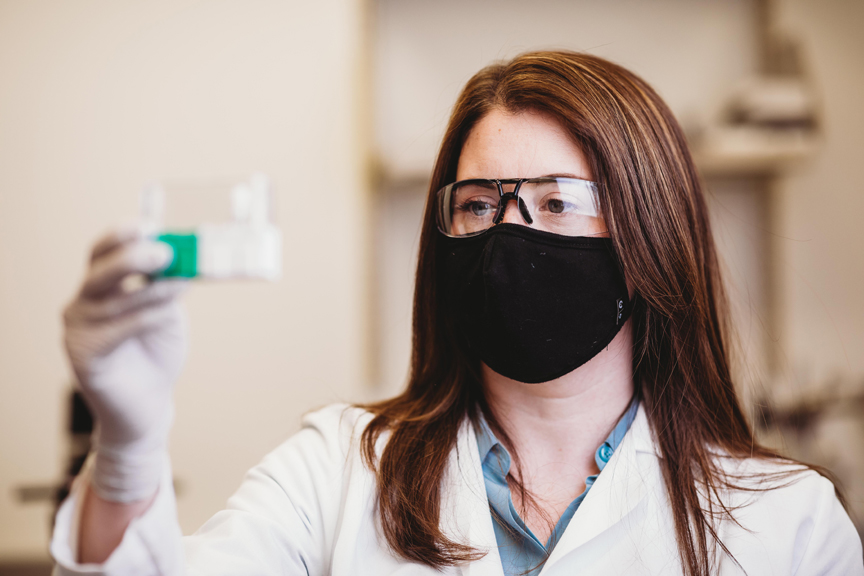
“It’s an exciting time in the lab,” Anand said. “We recently forged a relationship with the chief medical officer at Broadlawns Hospital in Des Moines, Iowa, to secure clinical viral samples when we’re ready to begin regulatory testing. We are also happy to announce that we recently secured major funding for our COVID-19 project.”
In late October, the Roy J. Carver Charitable Trust of Muscatine, Iowa awarded the Anand Lab $300,793. The grant will support Anand’s research, in particular the development of a COVID-19 testing prototype, a critical step in the FDA approval process.
“By the end of the year, we should have a working prototype in hand,” Anand said. “We will license the test to a pharmaceutical company that will manufacture the test and deliver it to store shelves. What we need now is speed and a large corporation that has the necessary processes in place.”
As her COVID-19 work advances, Anand moves forward on ongoing research which has earned lucrative grants from the National Science Foundation (NSF) and the National Institutes of Health. In early 2020, she was named the inaugural Suresh Faculty Fellow. Anand will hold the title for five years.
Anand has also won numerous awards. She was named to the Top 40 Under 40 Power List by The Analytical Scientist magazine and tapped as a 2019 Cottrell Scholar, a national program that recognizes the nation’s most outstanding teacher-scholars. Anand has been invited to present her research at the University of Notre Dame and the University of Texas, Austin.
An award trifecta
Last summer, the Pittsburgh Conference on Analytical Chemistry and Applied Spectroscopy (PittCon) announced its annual award winners, who will be formally recognized during a virtual ceremony this spring. Pittcon is the largest analytical chemistry conference in the world.
Anand made Pittcon history by securing three of the seven awards for her work on circulating tumor cells. She was the first scientist to win more than two Pittcon awards in one year. Anand earned the separation science and electrochemical awards, as well as the prestigious overall award for research.
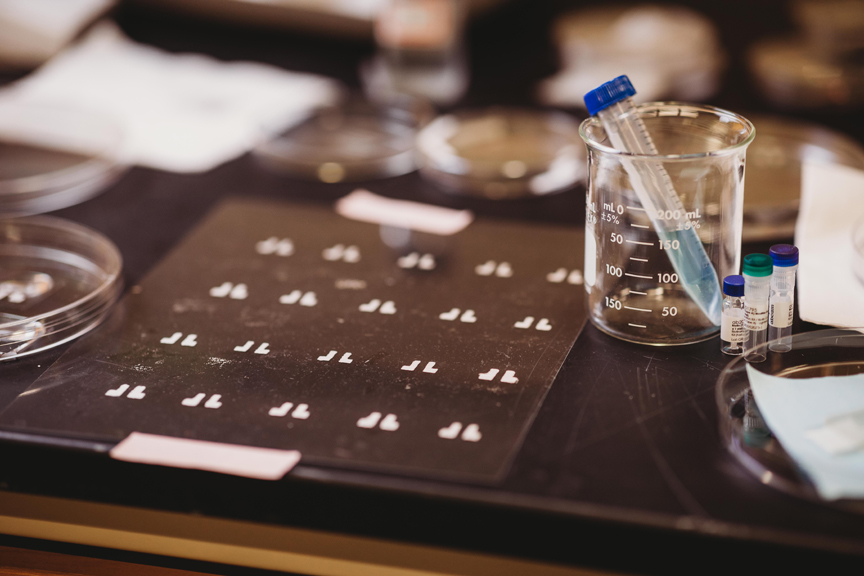
Richard Crooks, a veteran analytical chemist with more than 35 years of research experience, agrees that Anand’s achievements in separation science and electrochemistry are extraordinary.
“Robbyn Anand is a rare individual and an incredible asset to your Iowa State University research community,” said Crooks, Anand’s former graduate advisor and a professor in the Department of Chemistry at the University of Austin, Texas. “She is well known in the field of analytical chemistry and everyone thinks the world of her and wants to collaborate with her.”
Conquering cancer
After one of her best friends successfully battled a rare form of salivary-gland cancer, Anand did what best friends do. She listened. Her friend grew concerned about his cancer returning.
“My friend kept wondering if he had undetected circulating cancer cells in his blood that would eventually spread,” Anand said. “And my friend kept asking me, ‘Where can I access a test that would detect circulating cancer cells?’”
Although many research groups are working on circulating tumor cells, Anand knew that the technology her friend sought wasn’t commercially available.
Anand decided to change that.
"Robbyn Anand is a rare individual and an incredible asset to your Iowa State University research community. She is well known in the field of analytical chemistry and everyone thinks the world of her and wants to collaborate with her."
She spent two years harnessing the fusion of electrochemistry and separation science to develop a device that detects circulating cancerous tumor cells in the bloodstream early, before the disease becomes end-stage.
“Essentially, you draw blood and use our device to separate, identify and analyze cancer cells. Then we can determine what kinds of genetic mutations are in those captured cells and we’ll look at the cell machinery itself,” Anand said. “This will give us a good read on how the cancer cells will respond to medication.”
Improving life for kidney dialysis patients
Two years ago, Anand invited her brother to tour her chemistry lab in Hach Hall. This was more than a casual visit to view a sibling’s workplace. This was an opportunity for her brother to observe where his sister spent years inventing and retooling a microfluidic device that could someday treat his advanced kidney disease.
Using electricity to separate molecules in blood, Anand developed a method that mimics the work of kidney dialysis machines, filtering out excess fluids and wastes.
Anand designed the process in graduate school while researching the desalination of sea water. As her brother battled progressive kidney disease, Anand tailored the seawater research to the dynamics of dialysis.
“When my brother visited my lab, he was really touched when he saw some of the research posters and the devices. He was nearly speechless,” Anand said. “And it was great to see my inspiration for this research standing right in my lab.”
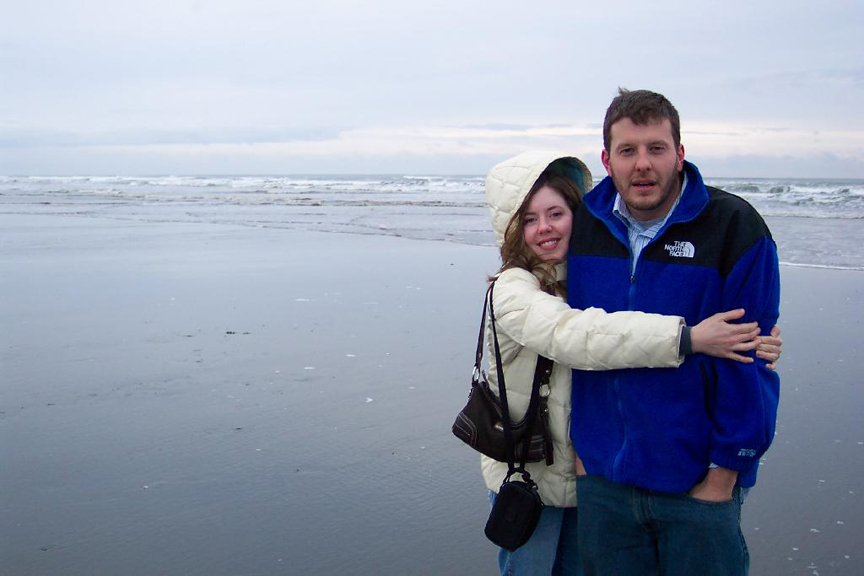
Anand’s brother continues his fight with kidney disease and is doing well today.
Anand’s goal is to create a wearable device that replaces kidney hemodialysis, a time-consuming procedure that requires patients to travel to the hospital for treatment, up to a few times a week.
She recently solved a key problem with the electrical fields in her dialysis device, describing the solution as “the biggest breakthrough we've had recently in our lab.”
“We used electric-field-based separation to develop a new device that is wearable and scalable,” Anand said. “This is an exciting development, because a bigger device accommodates the large amount of dialysate fluid which is necessary during hemodialysis.”
The chemistry of teamwork
Anand is quick to note that the hard work, steady progress and innovative breakthroughs in her lab are a team effort—a byproduct of ‘good chemistry’ between her team members.
“We all work very hard and we work well together,” Anand said. “Beatrise Berzina, (’20 Ph.D. chemistry) one of my graduate students, came up with an idea to use tiny beads to solve the scalability problem with the dialysis device. When it worked, I was just so proud of her.”
Thirteen students work with Anand in her lab; three undergraduates and 10 graduate students. The team is currently preparing to submit their dialysis research to a professional journal. They’re also diligently working to get their COVID-19 test approved, developed into a prototype and manufactured.
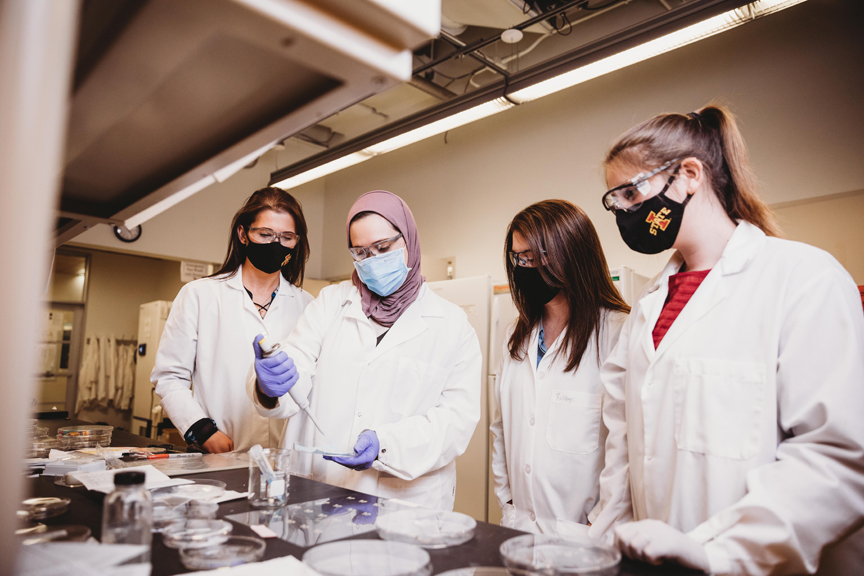
“It’s important to do great research and I also think it’s critical to be supportive of students and to cultivate an environment where they are supportive of each other,” Anand said.
Anand’s career, accomplishments and the personal support she offers her students, colleagues and the scientific community continue to be defined by the word she first spotted on a vocabulary flashcard.
Ameliorate.
“It’s all about improving the health and quality of life for the people that I know and people that I will never meet,” Anand said. “That’s why I’m excited about every single project in my group.”
Read more about life in the Anand Lab, and how Robbyn Anand provides her student researchers with valuable experiences and life-changing opportunities.
